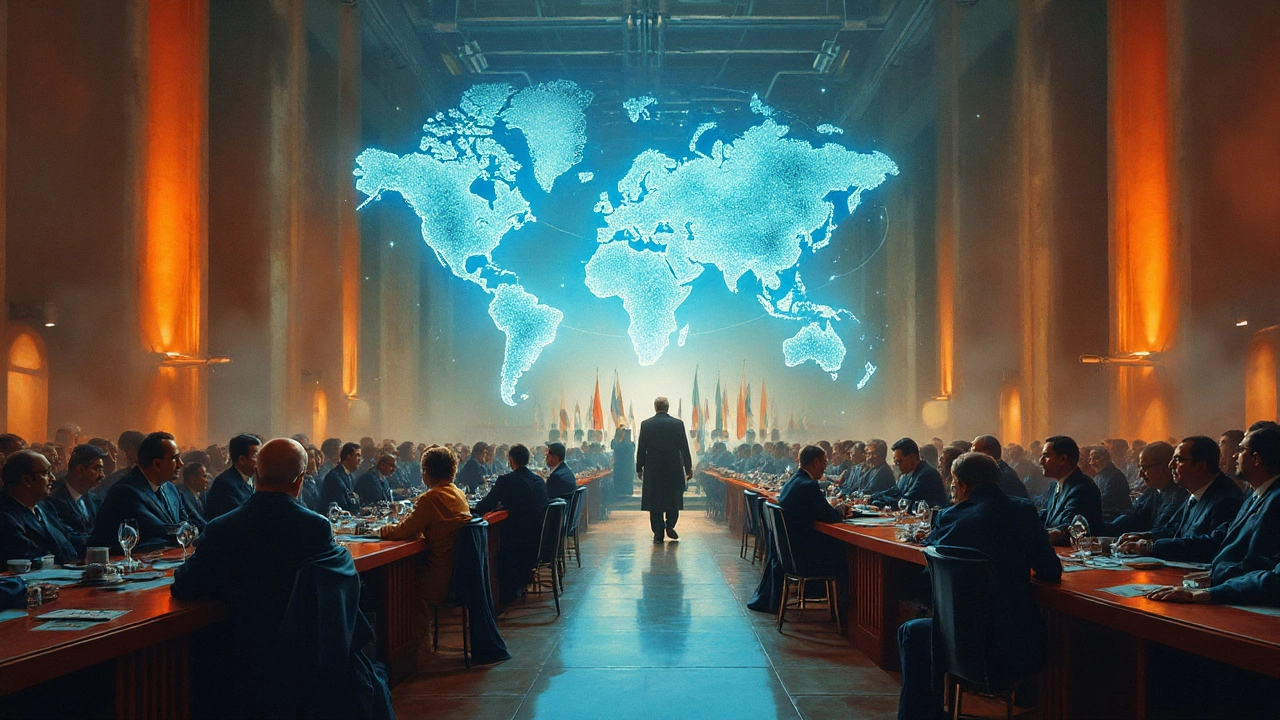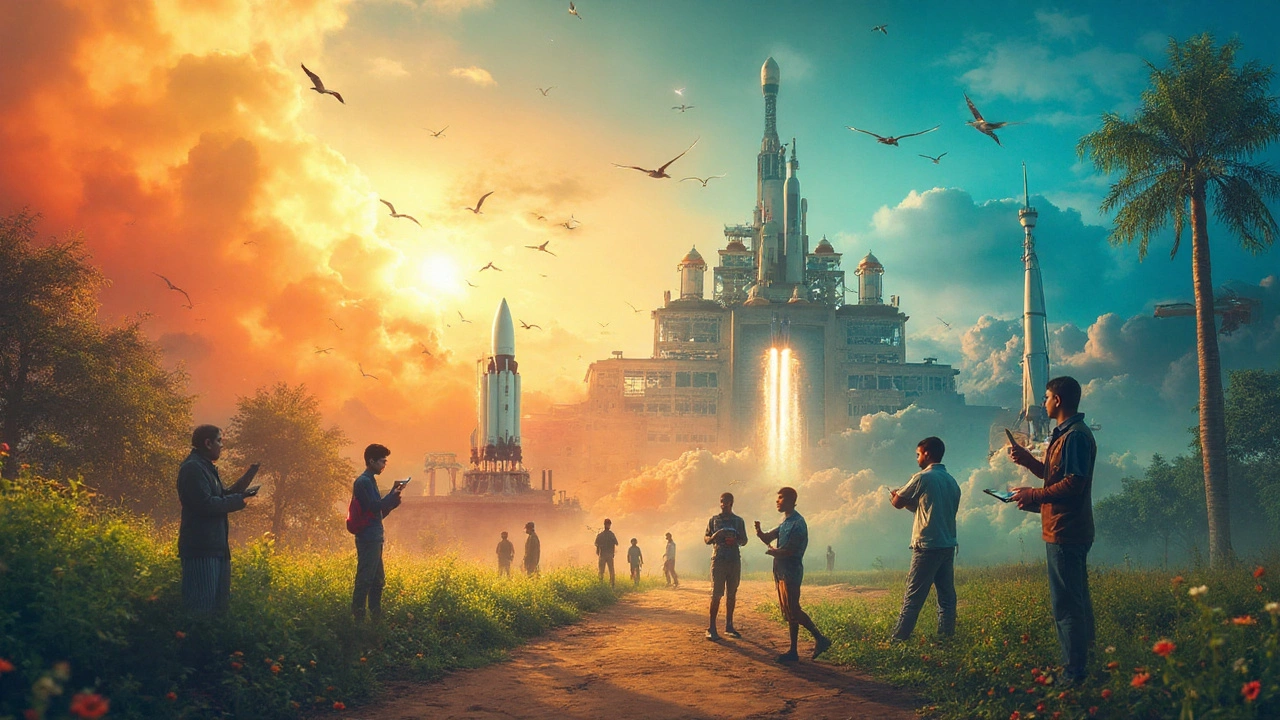Is India a World Superpower? Future of Global Leadership and Influence
 Aug, 3 2025
Aug, 3 2025
Picture this: cricket fans screaming in packed stadiums, Bollywood dancers lighting up stages, and a tech industry bustling with energy 24/7. Yet, when you look beyond the color and chaos, something much bigger is happening right now. India—the world’s most populated nation—has been making some bold moves on the world stage. You hear stories about a booming economy, missions to the moon, and young entrepreneurs making waves. But does all this make India a world superpower, or are there twists most people miss? The answer isn’t as simple as you think.
Let’s walk through the facts, the dreams, and some hard realities: India is often called “the world’s largest democracy.” It has over 1.4 billion people, making every decision—from who runs the country to which mobile app takes off—a matter of global importance. The eyes of politicians, business leaders, and even school kids from Sydney to San Francisco have turned toward India. People are asking: Is India taking over the spotlight, or is there more shine than substance? Let’s break it down.
India’s Economic Growth: Hype versus Reality
First things first—the numbers don’t lie, but they also don’t tell the whole story. India’s economy clocked about USD 4.1 trillion in GDP by mid-2025, making it the world’s fifth largest, just behind Germany. Talk to a Wall Street investor, and you’ll hear about the so-called 'India moment'—the windows of economic opportunity that’s got international money pouring in. Tech giants like Apple and Tesla have set up shop in Indian cities, and local startups have started to go global. The IITs (India’s answer to MIT) keep shooting out world-class engineers. Want an example? In June 2025, Tinkr, an Indian startup, just became Asia’s youngest tech unicorn, solving real-world water shortages with AI and drone tech.
Here’s where it gets interesting: For every satellite India launches or skyscraper that shoots up in Mumbai, there’s also a rural village far behind. Millions still rely on subsistence farming, and about 30% of Indian kids are considered malnourished even now. Infrastructure gaps, a complicated tax system, and a notorious web of bureaucracy mean growth doesn’t reach everyone equally. So while the headlines promise hyper-growth, the day-to-day lives of many Indians still show a different pace. The GDP per capita hovers around USD 2,900, a fraction of what countries like the US or Japan boast.
But there’s also another angle. Despite the gaps, India’s a country of hustlers and survivors. Digital payments using UPI are now so common that you’ll even see a chai seller in a dusty town using a QR code. India’s digital drive connected over 800 million people to the internet. This has shaped a whole generation of digital natives, creating a young workforce eager to learn, migrate, and innovate anywhere on the map. So, can a superpower really be defined just by towering skyscrapers? For India, progress is as much about leveling up the small towns as it is about showing off new metro stations.
Still, being a superpower means a safety net for the masses, not just the rich. India’s government rolled out schemes like the PM Garib Kalyan Anna Yojana, feeding close to 800 million during and after the pandemic—a scale you can’t ignore. There are lessons here: economic miracles don’t happen overnight, and real power means lifting everyone, not just a few.

Political Clout and Military Power
Okay, let’s talk about where real superpowers flex their muscle: politics and the military. If you look at global alliances, India has become the darling of Asia. It sits at the center of the 'Quad' alongside Japan, Australia, and the US. Why does this matter? Chinese influence in the Indo-Pacific has made allies nervous, and India’s got just the right mix of old-school military tradition and next-gen firepower. The country’s defense budget for 2025 is the third largest in the world—behind only the US and China. In February, India tested the Agni-VI missile, which boasts a range that can hit almost all parts of the globe. No other country in South Asia can claim such reach, and this raises plenty of eyebrows in Washington and Beijing.
The army isn’t just about firepower, though. India regularly sends troops for peacekeeping missions under the United Nations flag. Indian naval ships are a regular sight in anti-piracy patrols off Africa, and the Air Force made a huge splash with its indigenous Tejas fighter jet project. What’s wild is the way military technology intersects with everyday life—space technologies used for disaster warning and crop mapping started out as defense projects. While many countries import their top tech, India’s started making most of its own, flexing its autonomy even further.
Politics? That’s another kettle of fish. India hosts the G20 summit in 2023 and became a major voice in the climate debate, pushing for 'climate justice’ for developing nations. If you watched the news this June, Indian negotiators managed to get a not-so-friendly panel to agree to phased coal reduction, a move that had the EU and US grudgingly nodding along. Behind the scenes, diplomats hustle to keep world leaders on good terms, even as India nudges for reforms at the United Nations Security Council—a place it’s still fighting to join as a permanent member.
Domestic politics, though, are complicated. From protests on farm laws to debates about press freedom and religious diversity, India’s democracy gets stress-tested daily. The world’s watching, sometimes with admiration, sometimes with suspicion. Superpowers have always battled messy politics—but how India manages its differences at home might decide how it’s seen abroad the next decade.

Cultural Soft Power and Global Influence
Now, let’s move away from tanks and GDP reports. Some real superpower status comes from persuasion and presence, not just power. If you’ve danced to a Bollywood track, eaten masala dosa, or used WhatsApp, you’ve felt India’s global touch. Indian culture has fans everywhere—from Nigerian hip-hop artists sampling Bhangra beats to yoga studios dotting New York’s neighborhoods. You can hardly walk into a bookstore anywhere without seeing Indian authors like Arundhati Roy, Salman Rushdie, or Chetan Bhagat on the shelves. This stuff matters because superpowers spread influence not just by force or money, but by being irresistible.
Here’s a quirky stat: the International Day of Yoga—India’s brainchild—is now celebrated in over 190 countries. More people follow yoga in Warsaw than in some Indian cities. Netflix’s global smash “Sacred Games” had subtitles in over 30 languages. Indian cuisine? You can grab butter chicken in Berlin, New Delhi, or Sao Paulo. And if you follow cricket, sports analysts estimate that over 80% of the sport’s total viewership comes from Indian audiences and their massive diaspora. No country has built fandoms quite like India—people line up at midnight to see Bollywood blockbusters or to vote for Bigg Boss contestants.
Now, on the topic of the diaspora—around 35 million people of Indian origin live overseas as of 2025. These “global Indians” are CEOs in Silicon Valley, lawmakers in Canada, and innovators in biotech companies. Their influence stretches far—think Sundar Pichai running Google or Rishi Sunak as the UK’s Prime Minister. These connections can give India a huge network effect that’s hard to measure but impossible to ignore. If you’re sitting at a dinner in Paris and the conversation turns to Indian food, movies, or elections, you get a sense of just how far the ripple spreads.
But soft power isn’t always straightforward. With influence comes responsibility—and scrutiny. India’s social media scene can be both welcoming and divisive, and global debates sometimes spill over, as seen when international celebs like Rihanna comment on Indian protests and spark Twitter storms. But even these controversies prove just how closely watched India is. The ability to spark global conversations, for better or worse, is the mark of a nation with real punch.
So, is India a world superpower—the kind that can shape destinies, write rules, and set agendas beyond its own borders? The answer depends on what you expect from a superpower. If it’s pure economics or raw firepower, India still has ground to cover. But if you look at cultural reach, diplomatic hustle, and the sheer energy of a billion-strong youth—India’s got a unique blend you can’t ignore. The world is watching to see if it can turn promise into power, for everyone, not just a few at the top. The next decade will be the real test. For now, the spotlight’s on India—and it’s not fading anytime soon.